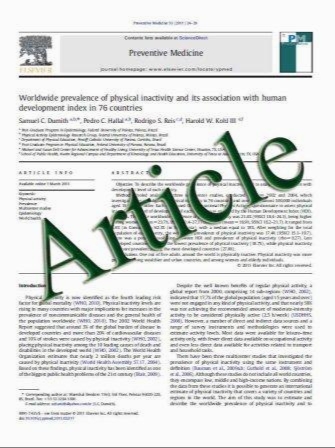Development of cerebral sulci and gyri in fetuses of cynomolgus monkeys (Macaca fascicularis)
- نوع فایل : کتاب
- زبان : انگلیسی
- مؤلف : K. Fukunishi Æ K. Sawada Æ M. Kashima H. Sakata-Haga Æ K. Fukuzaki Æ Y. Fukui
- چاپ و سال / کشور: 2006
Description
This study aimed to clarify the development of sulci and gyri on the external surface of the cerebrum of cynomolgus monkeys. Sulcus formation began with the appearance of the lateral fissure on embryonic day (ED) 70, followed by delineations of four cerebral lobes by the emergence of the parietooccipital sulcus, central sulcus, and preoccipital notch on EDs 80–90. The following primary sulci were then visible until ED 120: the superior temporal sulcus on ED 90; the intraparietal sulcus, lunate sulcus, inferior occipital sulcus, and arcuate sulcus on ED 100; and the principle sulcus on ED 110; the occipitotemporal sulcus, anterior middle temporal sulcus, and superior postcentral dimple on ED 120. These sulci demarcated the superior temporal gyrus on ED 90, the precentral gyrus, supramarginal gyrus, and angular gyrus on ED 100, and the inferior and middle temporal gyri, postocentral gyrus, superior parietal lobule, superior, middle and inferior frontal gyri, and inferior occipital gyrus on ED 120. Except for the intermediate and lateral orbitofrontal sulci, the sulci that appeared on ED 130 and thereafter were not related to the gyrus demarcations. Intriguingly, the brain markedly gained weight on EDs 100 and 120, corresponding to the embryonic ages when almost all gyri were visible. The results suggest that a rapid growth of the cerebrum involves convolutions of the gyri by a regular sequence of the sulcus formation in cynomolgus monkeys. This study further provides a standard of reference for normal development in the cerebral cortical morphology of cynomolgus monkeys.
Anat Embryol (2006) 211: 757–764 Accepted: 9 October 2006 / Published online: 28 October 2006


